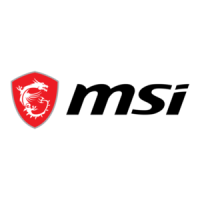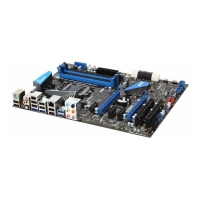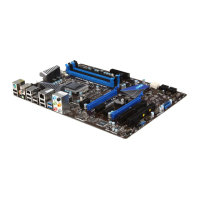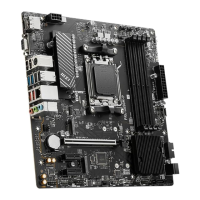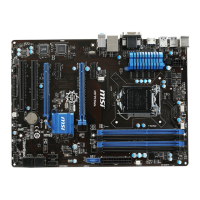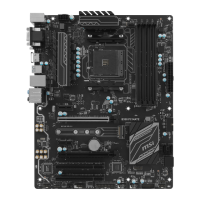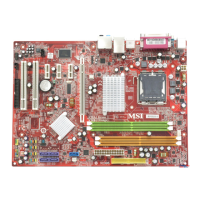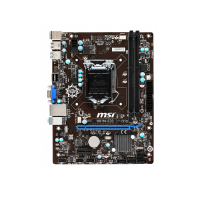2-12
Hardware Setup
Mouse/Keyboard
The standard PS/2
®
mouse/keyboard DIN connector s for a PS/2
®
mouse/keyboard.
Clear CMOS Button (optonal)
There s a CMOS RAM on board that has a power supply from external battery to keep
the system conguraton data. Wth the CMOS RAM, the system can automatcally
boot OS every tme t s turned on. If you want to clear the system conguraton, use
the button to clear data. Press the button to clear the data.
Important
Make sure that you power o the system before clearng CMOS data.
After pressng ths button to clear CMOS data n power o (G3) state, the system wll
boot automatcally.
Optcal S/PDIF-Out (optonal)
Ths S/PDIF (Sony & Phlps Dgtal Interconnect Format) connector s provded for dg
-
tal audo transmsson to external speakers through an optcal ber cable.
Coaxal S/PDIF-Out (optonal)
Ths S/PDIF (Sony & Phlps Dgtal Interconnect Format) connector s provded for dg
-
tal audo transmsson to external speakers through a coaxal cable.
IEEE 1394 Port (optonal)
The IEEE 1394 port on the back panel provdes connecton to IEEE 1394 devces.
USB 2.0 Port
The USB (Unversal Seral Bus) port s for attachng USB devces such as keyboard,
mouse, or other USB-compatble devces.
USB 3.0 Port (optonal)
USB 3.0 port s backward-compatble wth USB 2.0 devces. Supports data transfer rate
up to 5 Gbt/s (SuperSpeed).
Important
If you want to use a USB 3.0 devce, you must use the USB 3.0 cable to connect to the
USB 3.0 port.
▶
▶
▶
▶
▶
▶
▶
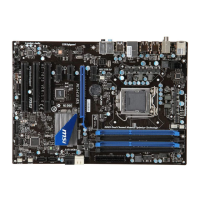
